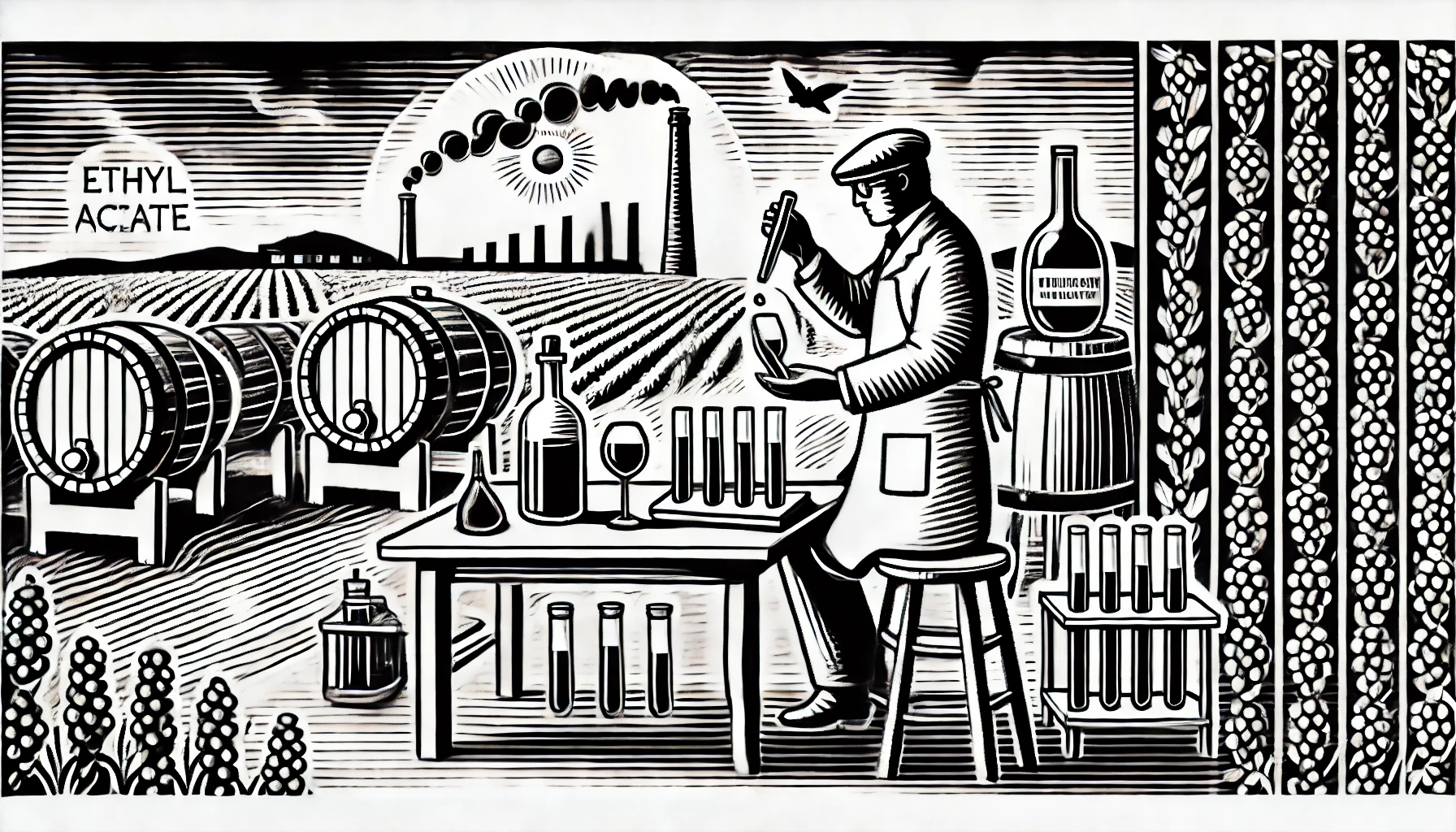
Ethyl acetate is a volatile ester formed during the fermentation process in wine. In small concentrations, it adds fruity, pleasant aromas to the wine, often likened to pear drops or apple. However, when present in larger amounts, it can take on more negative qualities, with aromas resembling nail polish remover or glue. The presence of this compound is often a sign of how the wine was fermented and aged, and in higher concentrations, it can be an indication of a winemaking fault.
Ethyl acetate forms naturally when ethanol (alcohol) reacts with acetic acid (another byproduct of fermentation). While trace amounts of it are found in most wines, careful winemaking techniques can prevent it from becoming overpowering. In wines where it’s well-managed, ethyl acetate contributes to the complexity of aromas, especially in whites and sparkling wines.
If a wine smells overly sharp or chemically, it could be a sign that ethyl acetate levels are too high, which might point to an issue during fermentation or improper storage. Wines with excessive ethyl acetate often taste out of balance and may also have hints of acetic acid, making them sour or vinegar-like. Winemakers work to control the development of this ester through proper hygiene and careful monitoring during the winemaking process.
Curious about more wine terms and insights? Visit our Wine Wiki section and explore the basic wine terms for expert definitions and tips!